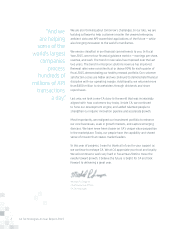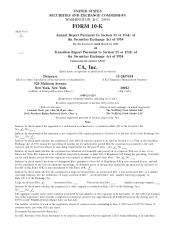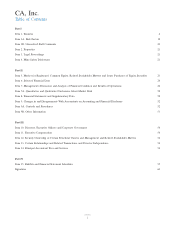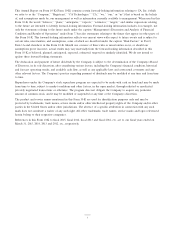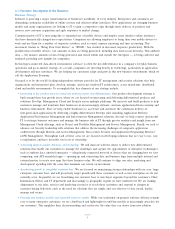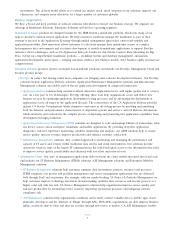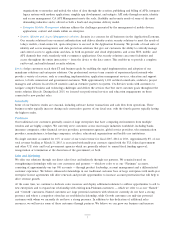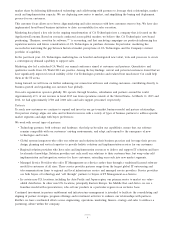Computer Associates 2015 Annual Report Download - page 13
Download and view the complete annual report
Please find page 13 of the 2015 Computer Associates annual report below. You can navigate through the pages in the report by either clicking on the pages listed below, or by using the keyword search tool below to find specific information within the annual report.
countries, full-scale intellectual property protection for our products and technology may be unavailable, and the laws of
other jurisdictions may not protect our proprietary technology rights to the same extent as the laws of the United States. We
also maintain contractual restrictions in our agreements with customers, employees and others to protect our intellectual
property rights. These restrictions generally bind our customers and employees to confidentiality regarding our intellectual
property and limit our customers’ use of our software and prohibit certain disclosures to third parties.
We regularly license software and technology from third parties, including some competitors, and incorporate them into our
own software products. We include third-party technology in our products in accordance with contractual relationships that
specify our rights.
We believe that our patent portfolio differentiates our products and services from those of our competitors, enhances our
ability to access third-party technology and helps protect our investment in research and development. We continue to
enhance our internal patent program to increase our ability to capture patents, strengthen their quality and increase the
pace at which we are able to move our innovations through the patent process. At March 31, 2015, our patent portfolio
included more than 1,050 issued patents and more than 950 pending applications in the United States and across the world.
The patents generally expire at various times over the next 20 years. Although the durations and geographic intellectual
property protection coverage for our patents may vary, we believe our patent portfolio adequately protects our interests.
Although we have a number of patents and pending applications that may be of value to various aspects of our products
and technology, we are not aware of any single patent that is essential to us or to any of our reportable segments.
The source code for our products is protected both as trade secrets and as copyrighted works. Our customers do not
generally have access to the source code for our products. Rather, on-premise customers typically access only the executable
code for our products, and SaaS customers access only the functionality of our SaaS offerings. Under certain contingent
circumstances, some of our customers are beneficiaries of a source code escrow arrangement that enables them to obtain a
limited right to access our source code.
We continue to be engaged in efforts to more fully employ our intellectual property by strategically licensing and/or
assigning selected assets within our portfolio. This effort is intended to better position us in the marketplace and allow us
the flexibility to reinvest in improving our overall business.
Product Licensing and Maintenance
For traditional, on-premise licensing, we typically license to customers either perpetually or on a subscription basis for a
specified term. Our customers also purchase maintenance and support services that provide technical support and any
general product enhancements released during the maintenance period.
Under a perpetual license, the customer has the right to use the licensed program for an indefinite period of time upon
payment of a one-time license fee. If the customer wants to receive maintenance, the customer is required to pay an
additional annual maintenance fee.
Under a subscription license, the customer has the right to usage and maintenance of the licensed products during the term
of the agreement. Under our licensing terms, customers can license our software products under multi-year licenses, with
most customers choosing terms of one to five years, although some customers seeking greater cost certainty may negotiate
longer terms. Thereafter, the license generally renews for the same period of time on the same terms and conditions, but
subject to the customer’s payment of our then-applicable fees.
Within these license categories, our contracts provide customers with the right to use our products under a variety of
models including, but not limited to:
• A typical designated CPU (central processing unit) license, under which the customer may use the licensed product on
a single, designated CPU.
• A MIPS (millions of instructions per second)-based license, which allows the customer to use the licensed product on
one or more CPUs, limited by the aggregate MIPS rating of the CPUs covered by the license.
• A user-based license, under which the customer may use the licensed product by or for the agreed number of licensed
users.
• A designated server license, under which the customer may use a certain distributed product on a single, designated
server. The licensed products must be licensed for use with a specific operating system.
10


